Shinagawa Ward is one of Tokyo’s 23 wards, known for its diverse neighbourhoods and numerous attractions. Each area within Shinagawa offers unique sights and activities, from historical landmarks to modern amenities. This ultimate guide to Shinagawa Ward provides insights into its different neighbourhoods, top things to do, historical significance, and accommodation options. Dive into the vibrant life of Shinagawa and uncover the best that this dynamic ward has to offer.
A Primer to Shinagawa Ward

Shinagawa Ward is located on the south side of the Imperial Palace and is part of the so-called “Jonan” area. While Tokyo is largely divided into “uptown” and “downtown,” Shinagawa Ward embodies both. It is residential and industrial, with an office district within the ward, creating a diverse area that caters to various lifestyles. In essence, it can be described as a place where “anything goes.”
The name “Shinagawa” is derived from Shinagawa-juku on the Tokaido Highway. The shopping district along the old Tokaido Highway and the Keikyu Line running near the sea have a distinctly downtown feel. Similarly, the Tokyu Oimachi Line and Ikegami Line, which run inland, feature a downtown atmosphere with scattered factories.
Despite its diverse characteristics, Shinagawa retains an air of class, possibly due to the presence of the high-end residential area known as “Jonan Gozan” in the southernmost section of the Yamanote Line, from Meguro to Shinagawa. There are also many liveable neighbourhoods with shopping streets running in all directions, essential for the daily lives of ordinary people. Shinagawa Ward is characterised by its wide range of residents, from the poor to the very rich, reflecting a microcosm of Tokyo itself.
Living in Shinagawa Ward

When one hears the name “Shinagawa Ward,” an image of a very urban area often comes to mind, possibly due to the association with JR Shinagawa Station. However, Shinagawa Station is actually located in Minato Ward, and most of Shinagawa Ward is characterised as a “downtown” area.
The most notable areas within Shinagawa are Hatanodai, Nakanobu, Togoshi, Musashikoyama, and other inland regions accessed by the Tokyu Meguro, Oimachi, and Ikegami lines. These areas feature shopping streets that spread out in all directions like a mesh, creating an uninterrupted flow of bustling common streets.
Each shopping street has its own lively atmosphere. Although Shinagawa lacks the supermarkets and delicatessens commonly found in Adachi Ward, Katsushika Ward, Kita Ward, and Arakawa Ward, the area still offers a comfortable living environment.
Shinagawa Ward is said to be the birthplace of the Keihin Industrial Zone and originally had a high concentration of factories, similar to Ota Ward today. Even now, as you walk around the city, you will be surprised to see overgrown apartments and one-story houses, with the cityscape remaining largely unchanged since the mid-Showa period.
Conversely, areas along the JR line, which provide direct access to the city centre without transfers, have been heavily developed and are now filled with high-rise condominiums.
The highlands of the Jonan Gozan mountains within the Yamanote Line present a completely different world, home only to celebrities. Additionally, there is the Tennozu Isle area, which was the setting for a popular drama in the 1990s. The overall image of Shinagawa Ward is a blend of the bustling metropolis of “Tokyo” and the “Edokko” downtown area.
History of Shinagawa Ward

The area around the mouth of the Meguro River, which flows through the district and empties into Tokyo Bay, has been called Shinagawa since ancient times, and many temples were built there in the Middle Ages.
In the early Edo period, Shinagawa was designated as the first post town on the Tokaido Highway, the busiest of the five highways, and was very prosperous as an important center for maritime trade and land transportation.
At that time, the area was popular for its abundant seafood and scenic beauty, and many people came and went from all over Edo City.
In the Meiji period, the railroad was built earlier than any other railroad in Japan, and large-scale factories were built one after another, pioneering the modern industrialization of Japan.
After the Great Kanto Earthquake, residential areas and fields were further converted into factories, and the transportation network, including private railways, was developed, making the city the center of the Keihin Industrial Zone.
During World War II, Shinagawa was severely damaged, and the number of war victims is said to have numbered more than 200,000.
In 1947, after the war, Shinagawa Ward and Ebara Ward merged to form the current Shinagawa Ward.
Areas of Shinagawa City Ward
Along the JR Yamanote Line and Keihin Tohoku Line
Osaki 大崎

Osaki, once a typical station on the Yamanote Line with little around it, has been transformed with the development of high-rise office buildings. It has become a key transfer station for the Shonan Shinjuku Line, Saikyo Line, and Rinkai Line. Although the area used to be industrial, few signs of this remain. Gotenyama, one of the five Jonan mountains, is within walking distance.
Gotanda 五反田
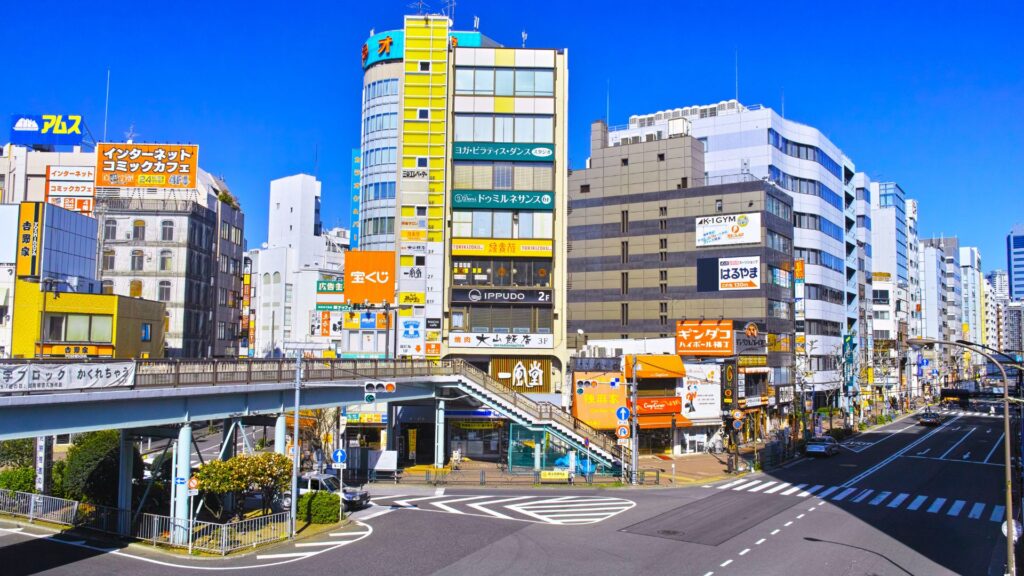
Gotanda, along with Uguisudani and Otsuka, is known for its questionable station fronts on the Yamanote Line. The east exit is particularly crowded with Gotanda Yurakucho, a special store for gentlemen, and a hotel district for Mona’s customers. The Kaikikan at the west exit reflects the area’s past as a red-light district.
On the hill are Mount Ikeda and Mount Shimazu, part of the five Jonan mountains and associated with the Empress of Japan. The Brazilian-Peruvian Consulate is also located here, with South American food stores and Peruvian restaurants scattered throughout the area.
Meguro 目黒

Despite its name, Meguro Station’s address is in Kami-Osaki, Shinagawa Ward. The famous Sanma Festival in Meguro is also held on the Shinagawa Ward side. Many residents use the Tokyu Meguro Line. In addition to Hanabusa-yama, one of the five Jonan mountains, there is a high-class residential area called Shirokane Chojamaru.
Oimachi 大井町

Oimachi is the nearest station to the Shinagawa Ward Office and the first station on the Tokyu Oimachi Line, also serving the Rinkai Line. The East Exit is known for Higashi-koji, a postwar restaurant district. This bustling area is filled with restaurants and cafes, maintaining its postwar charm.
Nishi-Oi 西大井

Nishi-Oi is a lesser-known station on the Yokosuka Line (Shinzuru Line) and also serves the Shonan Shinjuku Line rapid train. In front of the station is the graveyard of Ito Hirobumi, who was assassinated by An Jung-geun.
Shinagawa 品川

Shinagawa Station, despite its name, is not located in Shinagawa Ward. However, many residents of Shinagawa Ward use the station to transfer between the Yamanote Line, Keihin Tohoku Line, and Keikyu Line.
Along the Keikyu Line
Kitashinagawa 北品川
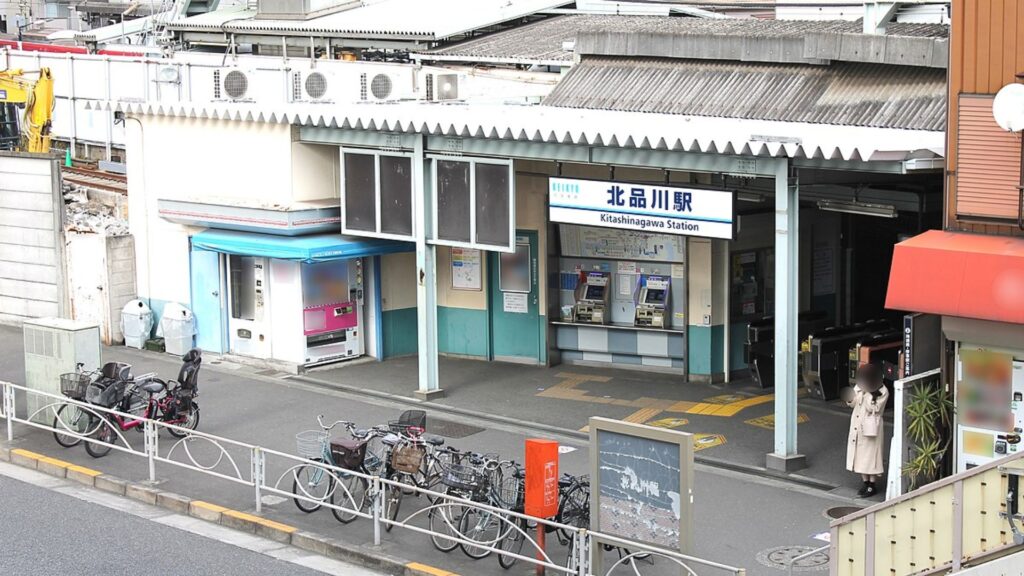
Kitashinagawa is located south of Shinagawa Station. The northern end of the old Tokaido Highway, Shinagawa-juku, is home to the Kita-Shinagawa Shopping Centre. It offers a good view of the boating pool, which retains the atmosphere of a pre-Edo fishing port with a backdrop of skyscrapers. Daiba Elementary School is a remnant of the former Shinagawa Daiba. The old inn town is characterised by its austere streets.
Shin-baba 新馬場

Shin-baba is the closest to the remains of the former headquarters of the Tokaido Highway Shinagawa-juku. The area boasts many historical temples and shrines, such as Shinagawa Shrine and Ebara Shrine.
Aomono-Yokocho 青物横丁

Aomono-Yokocho is located down Sendai-zaka from Oimachi Station. The distance between this station and the neighbouring Samezu Station is unusually short.
Samezu 鮫洲
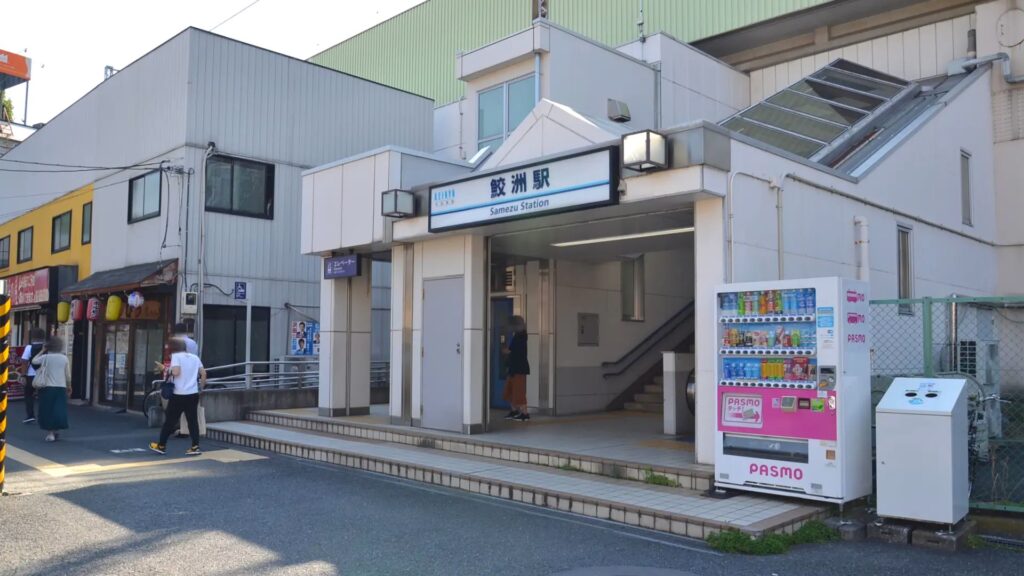
For Tokyoites, Samezu is primarily associated with the driver’s license centre. The shopping district in front of the station has many stores related to the driver’s license business, but the town itself is a remote area on the southern outskirts of Shinagawa-juku.
Tachiaigawa 立会川

The shopping street in front of Tachiaigawa Station is strongly associated with Ryoma Sakamoto. The Hamakawa Bridge over the Tachiaigawa River, as the station is named, is commonly known as the “Incapacitating Bridge.” This is where the families of criminals executed at Suzugamori Penitentiary bid them farewell with tears in their eyes. Katsushima Canal is known as a haven for stray cats.
Omorikaigan 大森海岸
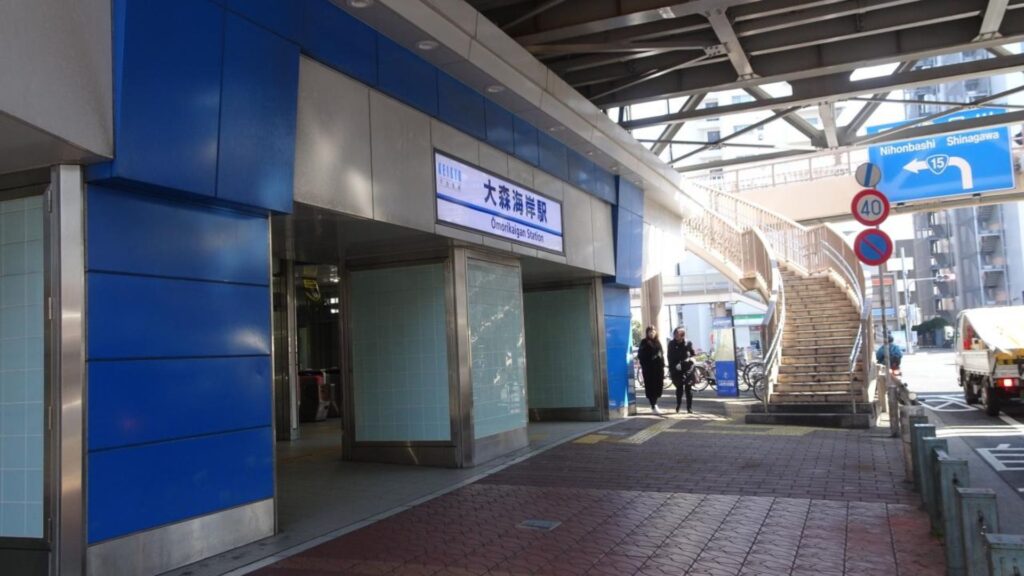
A special bathhouse that was once the only one in front of the station has gone out of business. However, the Shinagawa Aquarium, a popular spot for families, and the Suzugamori Penitentiary, an execution site during the Edo period, remain key attractions in the area.
Along the Tokyu Oimachi Line
Shimojinmei 下神明

A group of houses under the elevated railway tracks between Oimachi Station and Shimojinmei Station used to have a rather austere appearance, but they have been gone for some time. The landmark in front of the station is Tako Park. The pornographic book vending machine corner “Video 24” is hidden in an alleyway under the guard.
Togoshi-Koen Park 戸越公園

This area is a section of Togoshi Ginza off to the south. The building in front of Togoshi-koen Station has a Showa-era feel. The tunnel that runs under Osaki High School, where the “Auxiliary Route 26” has been cut off, has not been opened for any length of time.
Nakanobu 中延

There is an arcade called Nakanobu Skip Road in front of the station. A creative dining restaurant run by Hogen Fukunaga, a former Hoka Sanpo-gyo, opened in Nakanobu 6-chome but quickly collapsed.
Ebara-Cho 荏原町

Ebaramachi Shopping Street is notable for its many Nepalese-run food shops.
Hatanodai 旗の台

Hatanodai is a town where the Oimachi and Ikegami lines cross. It features a shopping district reminiscent of a gate town for Showa University Hospital. The narrow alley row houses on the south side of Hatanodai Elementary School are also impressive.
Along the Tokyu Meguro Line and Ikegami Line
Osaki Hirokoji 大崎広小路
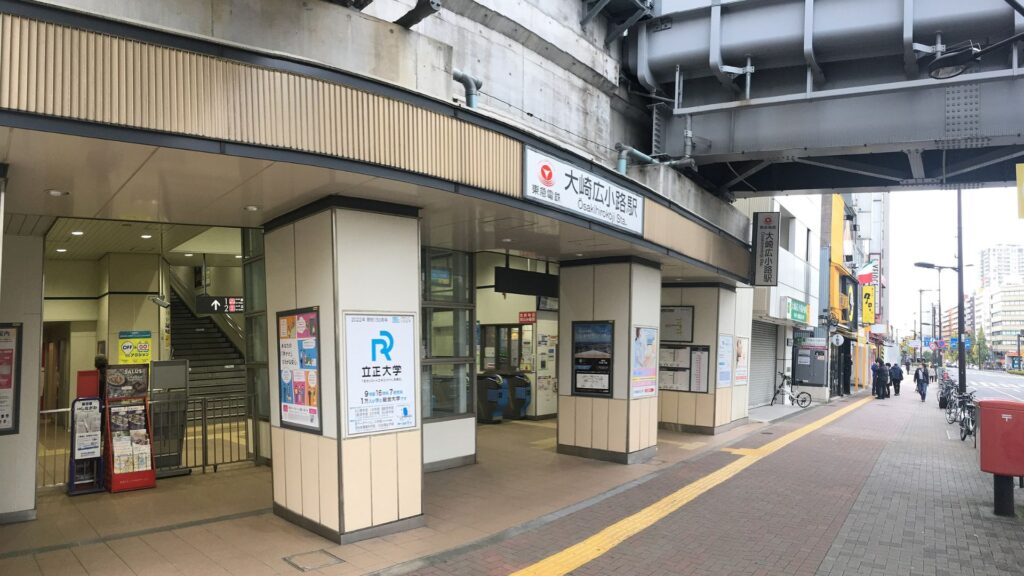
When the Ikegami Line began service, Osaki Hirokoji was the terminus because the Ikegami Line could not cross the Meguro River. The next station, Gotanda, is only 340 metres away. This station is the closest to the Gotanda TOC Building, a massive structure built in the Showa period.
Togoshi Ginza 戸越銀座

The station is located in the Togoshi Ginza shopping street, the longest shopping street in Shinagawa Ward. This street is the origin of many “somehow-Ginza” type shopping streets, as bricks from the Ginza area, salvaged after the Great Kanto Earthquake, were used in its construction. While it is a thriving shopping district, it surprisingly lacks impactful stores like ultra-cheap shops and delicatessens.
Ebaranakanobu 荏原中延

The Ikegami Line station is located beyond Nakanobu Skip Road. There is a back-alley restaurant district in front of the station. The former Dojunkai area that remained in Nakanobu 2-chome has been demolished.
Fudo-mae 不動前

The station name is derived from Meguro Fudo, but the address around the station is Nishi-Gotanda, Shinagawa Ward.
Musashikoyama 武蔵小山
Musashikoyama is a lively area featuring Musashikoyama Palm Shopping Street, the longest arcade in Tokyo. TV stations often stand by to interview housewives here.
The post-war slumping restaurant district in front of the station has disappeared and is scheduled to be redeveloped into townhouses. Musashi-Koyama’s original super-cheap standing drinking spot, BANDAI-YA, will soon open other restaurants.
Nishi-Koyama 西小山

Nishi-Koyama features a small arcade shopping street in front of the station. There is a reference to Nishi-Koyama Sangyoji, which is said to have existed in the past.
Other Areas
Tennozu Isle 天王洲アイル
Tennozu Isle is a glittering spot that gained popularity as a location for trendy dramas in the 1990s. It continues to be a modern and fashionable area, reflecting the dynamic spirit of Shinagawa.
Shinagawa Seaside 品川シーサイド
Shinagawa Seaside is a newly developed office district just a stone’s throw from the old Tokaido Highway, which retains a Showa-era atmosphere. This area used to be the headquarters of Rakuten before the company relocated to a more contemporary setting in Futakotamagawa.
Oi Racecourse Mae 大井競馬場前

Oi Racecourse Mae attracts gamblers who live along the Keikyu Line. Across the canal lies Yashio Danchi, a vast housing complex on an isolated island. The Shinkansen bullet train depot here is a favourite spot for railway enthusiasts.
Things to Do in Shinagawa Ward
Shinagawa Shrine 品川神社

There are many places called “power spots” in Tokyo, but Shinagawa Shrine is often associated with the keywords “kikisei” (to rise from the dead) and “ikkashira” (a reversal of fortune) due to the legend of Minamoto no Yoritomo. Additionally, the “Ichigumanbai no gojinsui” (divine water) at the Ana Inari Shrine on the shrine grounds is said to be beneficial for improving one’s financial fortune, attracting a steady stream of worshippers.
Find out more about Shinagawa Shrine here on Google maps.
Shinagawa Aquarium しながわ水族館

Opened in 1991 in the Shinagawa Kumin Park on the Omori Coast, Shinagawa Aquarium features a tunnel tank, which has become a staple in aquariums.
The aquarium offers a wide variety of exhibits, including dolphin, sea lion, and penguin shows, as well as a popular jellyfish zone. It also focuses on environmental education, with dioramas of rivers flowing into Tokyo Bay and the ecology of tidal flats and beaches that are disappearing. This combination of entertainment and education makes the Shinagawa Aquarium a unique and valuable destination.
Find out more about Shinagawa Aquarium here on Google maps.
Yatsuyama Bridge 八ツ山橋

Yatsuyama Bridge, made famous by the Hakone Ekiden boom during New Year’s, is also remembered as the place where Godzilla landed in the iconic film. This bridge is the starting point for a stroll along the old Tokaido Highway Shinagawa-juku, with a stone pillar from the 53 Stages of the Tokaido Highway placed at its foot.
The Yatsuyama Bridge is one of the best railroad viewpoints in Tokyo, offering views of the JR Yamanote, Keihin-Tohoku, Tokaido, and Yokosuka lines, as well as the Narita Express, Tokaido Shinkansen, and various Keihin Express trains. This is an exciting spot for both adults and children who love trains.
Find out more about Yatsuyama Bridge here on Google maps.
Museum of Logistics 物流博物館
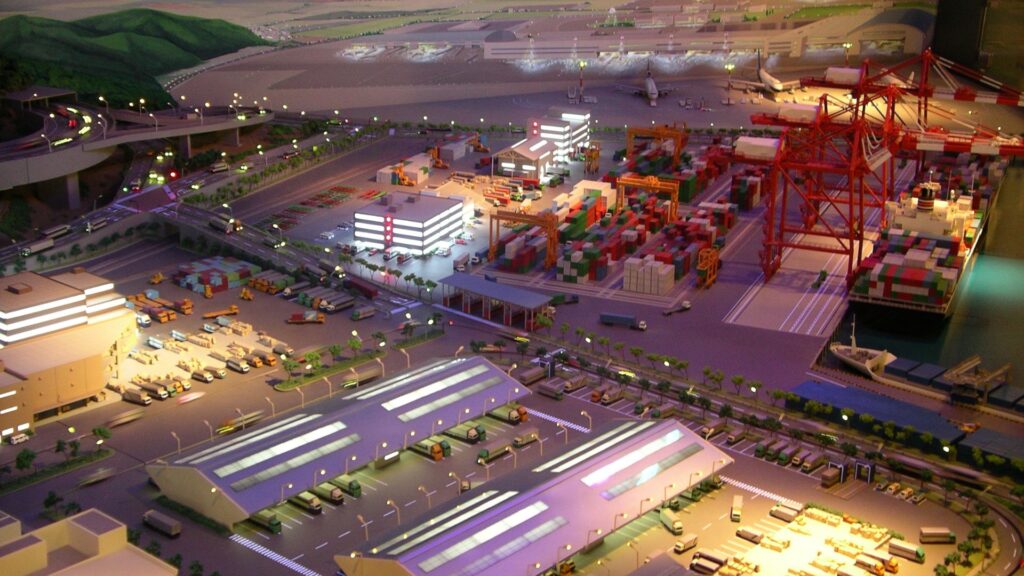
Shinagawa is also an area lined with container docks and logistics warehouses, serving as a logistics hub. The Logistics Museum, located a seven-minute walk from the Takanawa Exit of Shinagawa Station, is dedicated to logistics, which supports Japan’s economy. It is a facility that attracts many repeat visitors with its interesting special exhibitions.
Find out more about Museum of Logistics here on Google maps.
Kitashinagawa Spa Tenjinyu 北品川温泉 天神湯
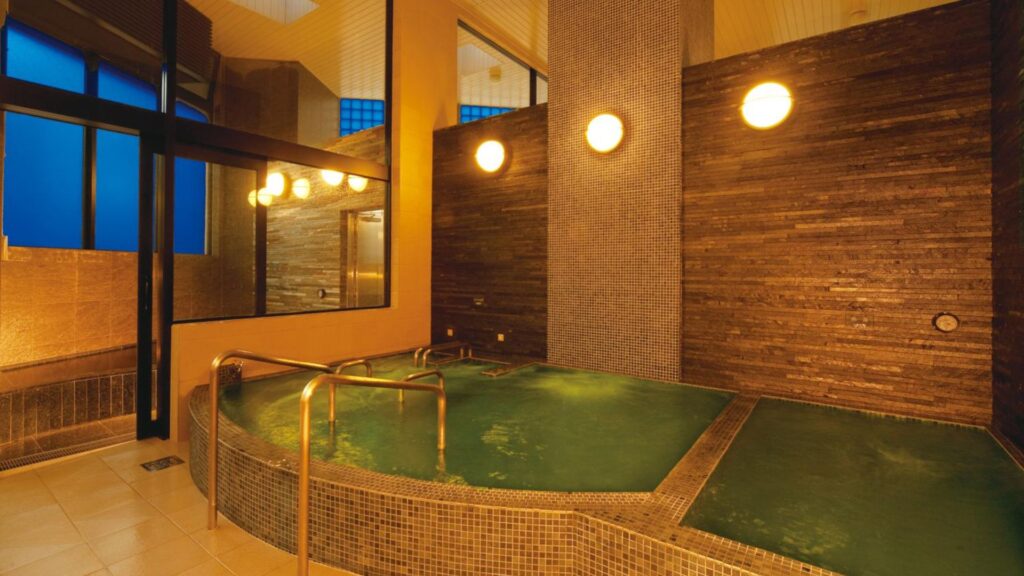
Located in the middle of the old Tokaido Highway Shinagawa-juku, a three-minute walk from Keikyu Shinbamba Station, Kitashinagawa Onsen Tenjinyu is famous for its deep amber-coloured black water. This is the result of decomposed Paleozoic plants permeating the groundwater, and the rich mineral content makes the water feel moist and smooth.
The hot spring is said to be effective for neuralgia, joint pain, and muscular pain, as well as treating sensitivity to cold. Admission is reasonably priced at 470 yen for adults, and a set of towels, body soap, shampoo, and other amenities is available for purchase, allowing visitors to come empty-handed.
Find out more about Kitashinagawa Spa Tenjinyu here on Google maps.
Maxell Aqua Park マクセル アクアパーク品川
Located in a corner of the Shinagawa Prince Hotel, Maxell Aqua Park Shinagawa is just a two-minute walk from the Takanawa Exit of Shinagawa Station. It is popular not only with families but also as a date spot. In particular, the dolphin show, which uses light and water to create a beautiful spectacle, is a must-see.
Find out more about Maxell Aqua Park here on Google maps.
Tennōzu Isle 天王洲アイル

Facing the Keihin Canal and Tennoz Canal, Tennozu Isle has transformed from a humble warehouse district into an “art island” through redevelopment. Walking along the waterfront boardwalk while viewing various works of art is sure to refresh your spirit. Tennozu Isle is often used for filming TV dramas and is perfect for a date, with many night view spots that are unique to the bay area.
Find out more about Tennōzu Isle here on Google maps.
Gotenyama Garden 御殿山庭園

Located in Gotenyama Trust City on the south side of the Tokyo Marriott Hotel, Gotenyama Garden features a walking path with ponds and waterfalls across an area of about 2,000 tsubo (approximately 2,000 square metres). This tranquil setting makes it hard to believe you are in the middle of the city.
Gotenyama has been famous for its cherry blossoms since the reign of the 8th Tokugawa Shogun Yoshimune, and the cherry blossom festival held here during the blooming season is a grand event. The festival features a blend of Edo atmosphere and cutting-edge technology, making it a must-see.
Find out more about Gotenyama Garden here on Google maps.
Shiokaze Park 潮風公園

Shiokaze Park is the largest park in Rinkai Fukutoshin. Even when the shopping area in Odaiba is crowded, Shiokaze Park offers a relatively relaxing place to spend time. Here, you can enjoy familiar views of the Rainbow Bridge over Tokyo Bay and the city centre, providing a peaceful escape from the bustling city surroundings.
Find out more about Shiokaze Park here on Google maps.
Recommended Accommodations in Shinagawa Ward
Loisir Hotel Shinagawa Seaside (4 Stars)
Loisir Hotel Shinagawa Seaside is located 500 metres from Honsenji Temple, 600 metres from Seiun Inari Shrine, and 800 metres from Samezu Hachiman Shrine. Popular points of interest near the hotel include Shinagawa Seaside Forest Oval Garden, Aeon Shinagawa Seaside, and Shinagawa Sentaikoujin Temple.
Toyoko Inn Tokyo Shinagawa
Situated in Tokyo, within 100 metres of Archi-Depot Museum and 300 metres of Tennozu Park, Toyoko Inn Tokyo Shinagawa Konan-guchi Tennozu Isle offers accommodation with a garden. Popular points of interest near the hotel include Yoriki Shrine, Higashishinagawa Kaijo Park, and Kujirazuka.
WIRES HOTEL James zaka (3 Stars)
WIRES HOTEL James zaka is close to popular attractions such as Seiun Inari Shrine, Ebara Jinja Shrine, and the Tomb of Takuan Osho. Additional points of interest near the hotel include Shinagawa Sentaikoujin Temple, Honkoji Temple, and Kaitokuji Temple.
The CALM Hotel Tokyo (2 Stars)
Located in the Shinagawa Ward district of Tokyo, The CALM Hotel Tokyo is 300 metres from Remy Gotanda Shopping Mall, 600 metres from Shimazu Family Old Residence, and 600 metres from Yakushi-ji Tokyo Annex Temple. Other nearby attractions include Hakone Meissen Antique Museum, Monument of Iwaya Sazanami Residence, and the Museum of Logistics.
Smart Stay SHIZUKU Shinagawa-Oimachi (1 Star)
Smart Stay SHIZUKU Shinagawa-Oimachi is located within 700 metres of Raifukuji Temple and Seiun Inari Shrine. Additional points of interest near the accommodation include Samezu Hachiman Shrine, Shinagawa Sentaikoujin Temple, and Honsenji Temple.
Guest House Shinagawa-shuku (2 Stars)
Featuring free Wi-Fi and rental bicycles, Guest House Shinagawa-shuku is just a 2-minute walk from Kita-Shinagawa Station. It is 5 minutes by train from JR Shinagawa Station and less than a 10-minute drive from Shinagawa Aquarium.
Petals Tokyo (2 Stars)
PETALS TOKYO offers river views, free WiFi, and free private parking. It is located 200 metres from Archi-Depot Museum. Popular points of interest near the accommodation include Tennozu Park, Kujirazuka, and Yoriki Shrine. The nearest airport is Tokyo Haneda International Airport, 8 km away.
C&J Hotel (3 Stars)
Situated in Tokyo, C&J Hotel is within a few steps of Shinagawa Aquarium and 300 metres of Iwai Jinja Shrine. Nearby attractions include Suzugamori Keijo-ato, Shinagawa Park, and Atre Omori.
五反田 BaliBaliANNEX (5 Stars)
Located in the Shinagawa Ward district of Tokyo, 五反田BaliBaliANNEX is 200 metres from Remy Gotanda Shopping Mall, 300 metres from Shimazu Family Old Residence, and 400 metres from Yakushi-ji Tokyo Annex Temple. Additional nearby points of interest include the Monument of Iwaya Sazanami Residence, Hatakeyama Memorial Museum of Fine Art, and the Museum of Logistics.
KEIKYU EX INN Shinagawa Shimbamba Station North (3 Stars)
Conveniently located in the Shinagawa Ward district of Tokyo, KEIKYU EX INN Shinagawa Shimbamba Station North is 200 metres from Yoganji Temple, Kaitokuji Temple, and Hozenji Temple. The property is also close to Yoriki Shrine, Kujirazuka, and the Tomb of Takuan Osho. The Hara Museum of Contemporary Art is 600 metres away.
Discovering the Wonders of Shinagawa Ward
Shinagawa Ward in Tokyo is a captivating blend of history and culture, offering a wealth of unique experiences. Whether you are intrigued by its historical significance or the diverse activities available, Shinagawa has much to offer. For those planning a visit, this blog provides valuable insights and information to help you make the most of your exploration. Don’t forget to refer back here for the latest updates and tips on what to see and do in Shinagawa Ward.


Recent Comments